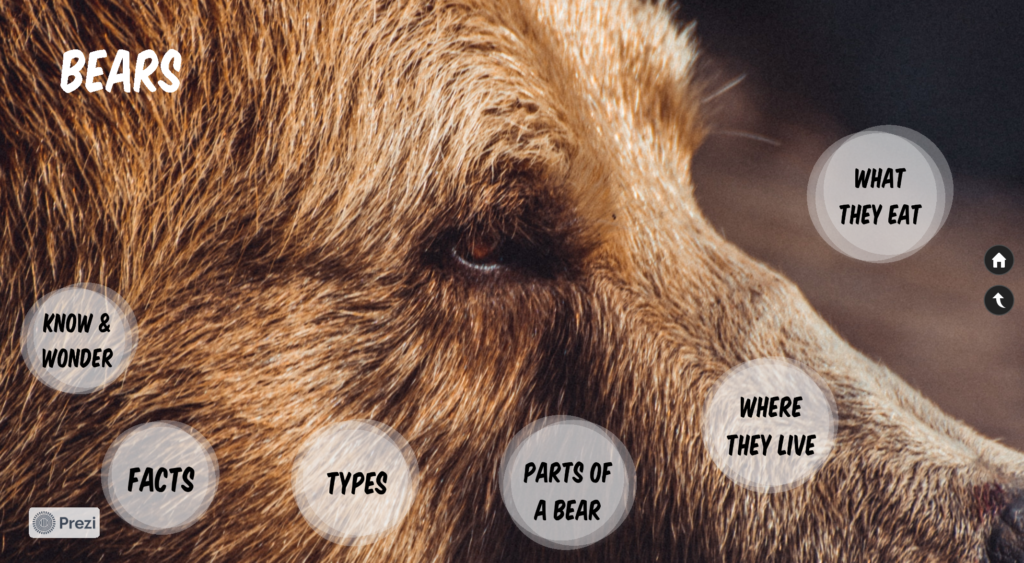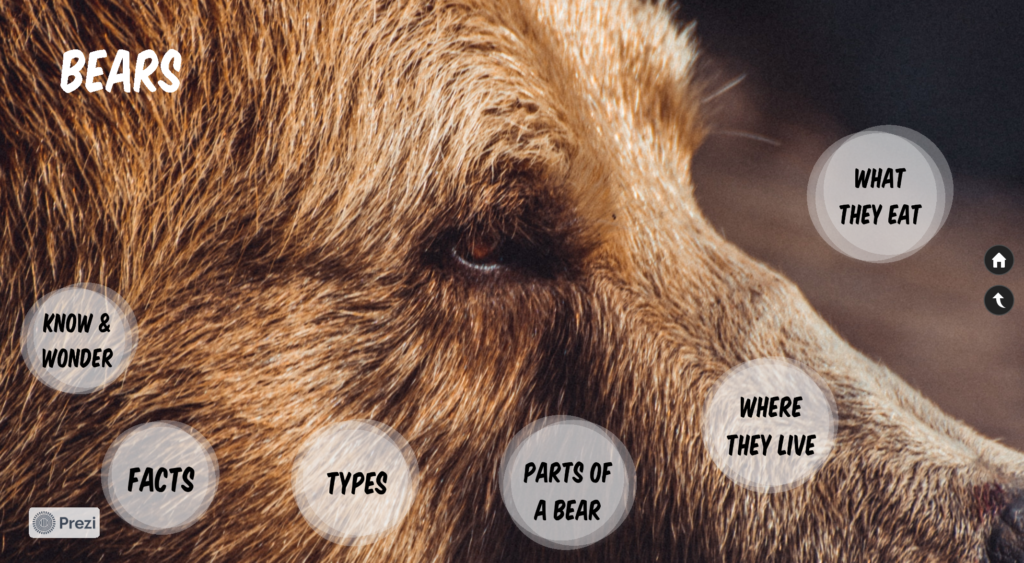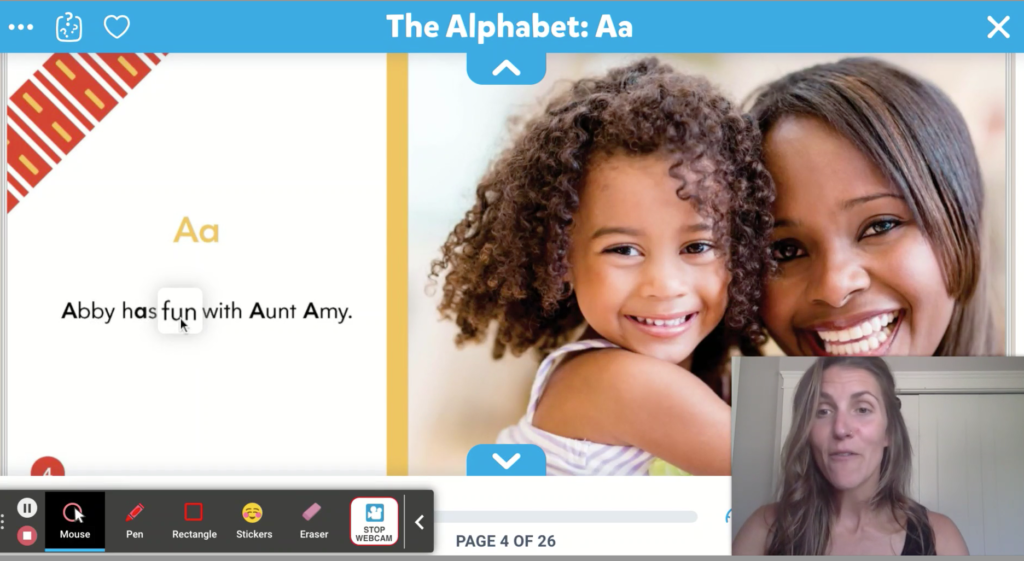In this post, I will discuss how I returned to a Prezi that I had made about bears and how I implemented changes by taking the multimedia learning principles and learning theories into consideration. I will explain how the updates which I made have increased the effectiveness of knowledge transfer to my potential learners. I have written this blog, as well as have added an explanation within the presentation of how I have improved upon my original.
I first began by addressing the Cognitive Load Theory and the Signalling Principal. Cognitive Load Theory discusses how, “if you overload working memory before there is time for encoding and long term storage in mental models, things will be forgotten” (Meyer, 2020) and the Signalling Principle discusses how, “people learn better when cues are added that highlight the key information and its organization” (Meyer, 2020). Therefore, when analyzing my original presentation, I noticed that I had potentially overwhelmed my learners by adding all the themes on the screen at once.

In hopes to minimize cognitive overload, I decided that I would signal attention to each theme one at a time through the use of a “fading” function within the platform. There would then be only one “theme,” (or white highlighting dot) on the screen at a time, thus lessening the cognitive load and guiding the learners eyes to exactly what I am speaking to.
Next, I chose to address the Redundancy Principle which states that, “people learn better when information is presented in more than one format” (Meyer, 2020) and the Modality Principle which explains that, “people learn better from graphics and narration than from graphics and printed text” (Meyer, 2020). I had originally written text in each of the white theme bubbles.

However, after my analysis and application of the modality principle, I realized that, since I would be speaking to my learners and saying the themes aloud, having the written words would be redundant. Therefore, it would be more effective to their learning if I had only an image on the theme to amplify the words I spoke. I also took into consideration the Split-Attention Principle and wanted to ensure my learners did not have to split their attention between the writing and the words.

Finally, I chose to address the Self-explanation Principle which explains how, “people learn better when they are encouraged to generate self-explanations during learning” (Meyer, 2020). After my analysis, I noticed that I never set up a place for a discussion or a chance for parter talk. I decided that after we watch the video regarding bear facts, I would ask the learners to turn to a partner and discuss one thing they learned. I will also stop and give an opportunity after the types of bears. Perhaps the learners can discuss a type of bear that stood out to them and then question which bears they think would reside in Canada and why. This will help them generate self-explanations and potentially help take the learning into their long term memory to be retained.
Overall, I believe the changes based on principles and theories have enhanced my Prezi immensely. I believe I have cut out extraneous information, used dual-channels, ensured that split- attention is less likely to occur and I have given space for the learners to engage with and discuss the information as much as possible in hopes to bind it to their long term memory storage. I believe I have managed the intrinsic load by using the segmenting principle, I have optimized the germane load by taking the image, voice, personalization and multimedia principles into consideration and that I have minimized the extraneous load by considering the coherence, signalling, redundancy and spatial contiguity principles were taken into consideration.
Below is a video demonstrating the changes which I made to this Prezi while taking the Multimedia Principles and Learning Theories into consideration.

Citation:
Mayer, R. E. (2009). Multimedia learning (2nd ed.). Cambridge, England: Cambridge University Press.
McGraw Hill PreK-12. (2019, January 19). Learning Science 101: Cognitive Load Theory[Video]. YouTube. https://www.youtube.com/watch?v=UpA6RdE0aYo
Wisc-Online. (2017, October 13). The Signaling Principle. [Video]. Youtube.https://www.youtube.com/watch?v=ENGjwO-kKpc
IITBombay. (2019, August 19). LeD 4.3B: Modality Principle and Redundancy Principle. [Video]. Youtube.https://www.youtube.com/watch?v=wNK21Li1b2Q







